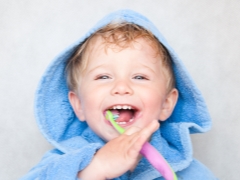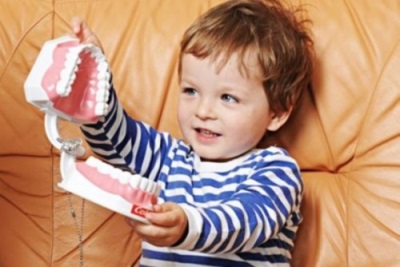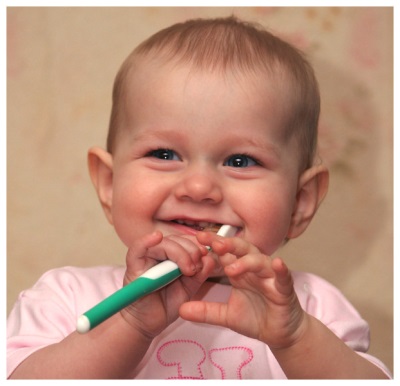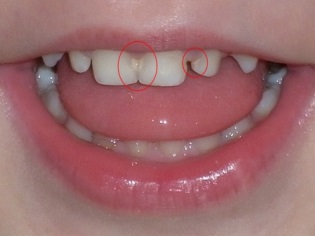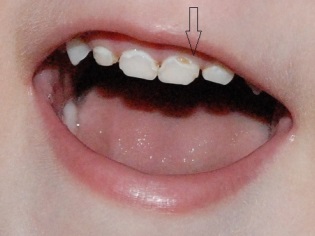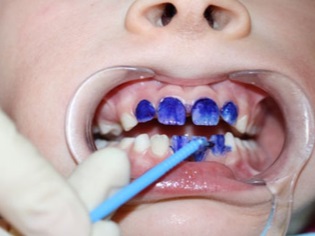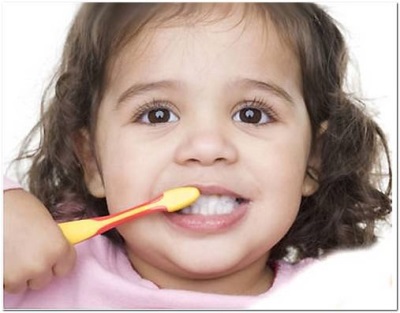How many teeth are in a child at 2 years old and how are teeth treated at this age?
It is important for all parents that their crumbs cut teeth in time, be strong and not hurt. And so they are interested in how many teeth should be at a certain age, for example, at 2 years. In addition, it is important to know about possible problems with the teeth in two-year-olds, as well as the prevention of such problems, because sufficient attention to the teeth at such an early age affects the health of the milk teeth, and the eruption of the constants.
How many teeth should a child have at 2?
Pediatricians are the norm for a two-year-old child having 20 milk teeth, which are located on 10 on each jaw of the baby. However, in some babies, the last four teeth (second molars) may not erupt. And because the presence of 16 teeth at 2 years of age is also normal. These teeth often erupt at the age of 20-26 months in the lower jaw and at the age of 26-33 months above. That is why some two-year-olds may not have them.
Deviations from the norm
Parents should not panic, if some teeth in a child erupt with a delay, but if a child has only a few teeth in the mouth in 2 years, this is an occasion to show the baby to a specialist.
The condition of the teeth in a two-year-old baby is influenced by various factors, among which the most significant are:
- Features nutrition karapuz, because of which the crumb loses important for the teeth nutrients.
- Long sucking dummy.
- Use by a child or future mother of drugs affecting the condition of the tooth germs.
- Improper care for the oral cavity of the baby.
- Long-term feeding of the baby from the bottle, as well as drinking from it at night sugary drinks.
- Frequent illness of the child.
- Insufficient load on the jaws of the crumbs due to the constant use of puree and chopped dishes.
All these factors can affect the sequence of teething, and the timing of their appearance in the oral cavity, and the development of their diseases.
Watch the transfer of Dr. Komarovsky teeth.
What problems can be?
- Damage to the teeth with caries. It seems to many parents that at the age of 2 this disease is not terrible, but even such babies have bad teeth. Very often the reason is the long-term use of food, for example, sucking it from a bottle. Often, the mothers themselves harm the teeth of their child when they give a crumbs that wake up at night to drink juice or compote. In such cases, babies develop caries, which is called bottle. It is a lesion of the front teeth, which appear very quickly and spoil the beautiful smile of the baby. Also, children of 2 years of age may begin to damage the chewing teeth, as they are hard to clean out the plaque. At the same time, the initial manifestations of the infection, which are white spots, parents may not notice. The disease is actively developing and finds itself when the teeth are already rotting and hurting.
- The appearance of plaque on the teeth and change its color. Normally, during the day, food remains and mucosal cells are collected in the mouth of the crumbs, but with timely cleaning, such a deposit does not accumulate and does not harm the teeth.If the care of the teeth is insufficient, the child's teeth turn yellow and the risk of developing bacteria on their surface increases. Also, the color of the teeth may change due to taking medication or eating food with dyes. In addition, some babies in the mouth develop special bacteria, due to which the teeth are covered with black bloom.
- Enamel hypoplasia. It is caused by impaired metabolic processes in the body of the crumbs, because of which the teeth do not develop well enough, and their enamel is too thin and fragile (they crumble badly). Most often, such a problem is triggered by factors affecting the woman’s body during gestation (when the baby’s teeth were laid), but it also happens because of hypovitaminosis, rickets, infectious or chronic diseases in a child in the first years of life.
- Fluorosis This is a chronic pathology of the teeth, caused by the excess ingress of fluoride into the child’s body from the water that the baby drinks. It is manifested by the appearance of white stripes, which are transformed into spots of white and brown. The teeth begin to break down and become covered with areas of enamel erosion. Although the problem is most often diagnosed in schoolchildren, with a high content of fluoride in water, it can also occur in 2-year-old children.
- Curvature of the teeth. Although permanent teeth can grow crooked more often, in rare cases, doctors diagnose abnormal location and milk teeth. Due to the lack of minerals and vitamins in the baby’s food, gaps can form between the teeth. Also, bad habits of the child, such as thumb sucking and long bottle feeding, can lead to curved teeth growth.
Treatment methods
Modern dentistry has many ways to treat children's teeth, among which the most common:
- Fluoridation. The child’s teeth are treated with a fluoride-containing substance. Such treatment is recommended for prevention or at the first manifestation of caries, and with deep damage to the teeth, it will be ineffective.
- Remineralization. The baby's teeth are coated with a solution in which there are mineral substances necessary for their strengthening. This method is also only suitable for protecting the teeth or for repairing minor damage.
- Silvering. Baby teeth are covered with silver solution in order to prevent their further damage during the initial caries. The disadvantage of the method is the darkening of the teeth after treatment.
- Filling. In cases where caries has penetrated deeply, infected tissues have to be removed from the tooth and replaced with modern filling materials. At the same time, fillings can be colored, which is pleasant to many babies and simplifies treatment.
- Alignment. To correct the position of the teeth at an early age, trainers or individually made plates can be used.
- Deletion. If the caries is too deep or the child has developed one of its complications, a permanent tooth danger to the health of the permanent tooth must be removed.
In the treatment of two-year-old children, anesthesia can be used at the dentist, which is often represented by local anesthesia. The child is smeared with an anesthetic gum or injected into the tissue with an injection. If the crumbs of a lot of infected teeth, the child categorically refuses treatment or suffers from pathologies of the neuropsychic sphere, the doctor will recommend general anesthesia.
Tips
- Periodically inspect the child's teeth and if you find points, stains, areas of darkening of the enamel, curvature and other warning signs, immediately go with the baby to the dentist.
- Remember that at the age of 2 a child only learns to brush their teeth on their own. Encourage the desire to brush your teeth yourself, but control this process so that the cleansing is thorough. Give the crumbs in the hands of a brush and let them act independently, and then brush the teeth of the child more carefully.
- From the age of 2, you can begin to use toothpaste for brushing your teeth. At the same time, it should be chosen without fluoride, since two-year-olds still do not know how to rinse their mouth and spit out the whole paste, and if an excess of fluoride enters the baby’s body, problems with teeth and bones are possible.
- Show your child a positive example of your own. Let the baby see that mom and dad regularly brush their teeth twice a day and periodically go to the dentist.
Prevention
Start taking care of the teeth of the child should be during the first trimester of pregnancy, when the crumbs laid the beginnings of future teeth. A future mother during this period should control her diet more and avoid infectious diseases.
After the birth of a toddler for the prevention of problems with teeth, you must:
- Start brushing your teeth as soon as they are cut.
- Monitor the baby's nutrition, so that the baby receives nutrients that are important for the formation of teeth.
- Time to abandon bottle feeding.
- Do not give at night to drink juice, compotes and sweet tea.
- To deal with such bad habits as a long passion for a pacifier and thumb sucking.
- Promptly add solid foods to your baby’s diet.
- Every 6 months, go with the child to the dentist.
Many mothers will wonder how to teach a baby to clean their teeth properly. In the next video you can see how to teach your child to brush their teeth during the game. The game will appeal to your baby and he wants to bring it to life.
